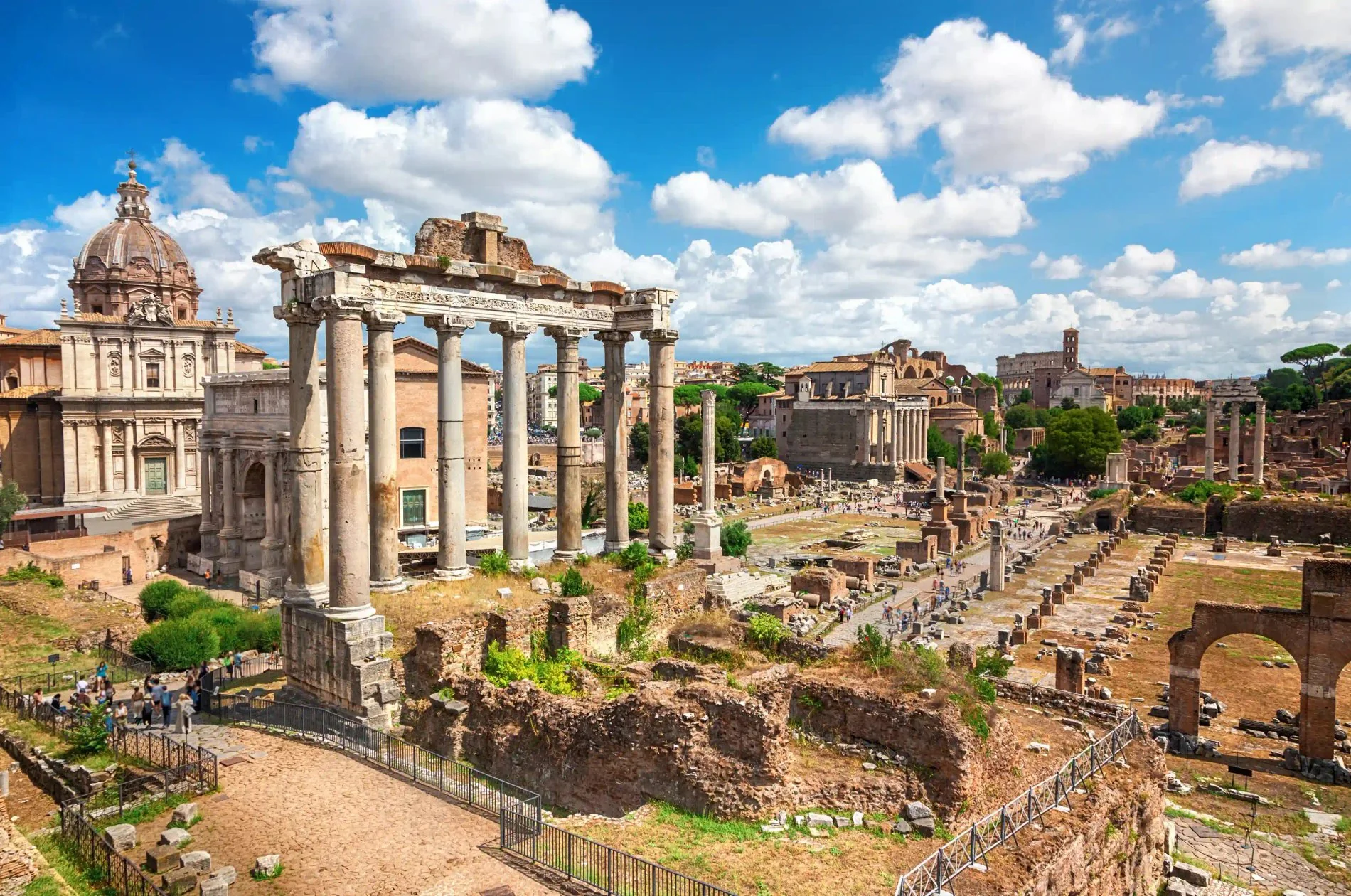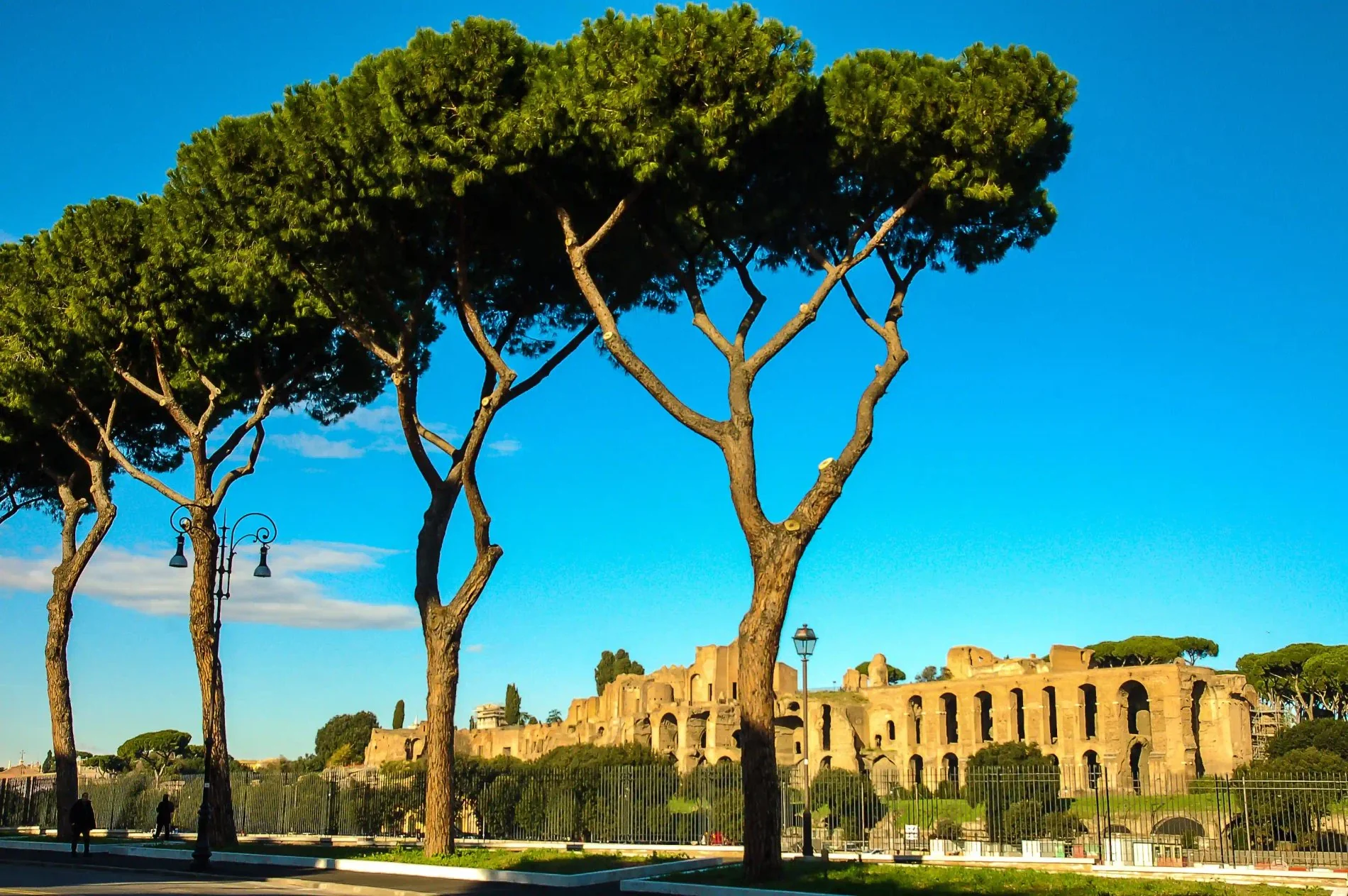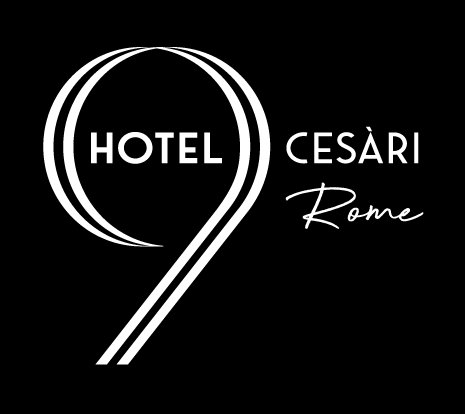Roman Forum
During the Roman Empire, this was the place where Roman citizens gathered to discuss business, be it political, economic, financial or other... Its location, between the Colosseum and the Capitol, makes it a heritage-rich must-see. This archaeological site forms a large rectangle reaching across these historic monuments: the Capitoline Hill, the Palatine, the Colosseum and the various imperial forums.
9Hotel Cesàri is the ideal hotel for your stay in Rome's historic center.
For your stay in Rome, do not hesitate to ask the team at 9Hotel Cesàri for advice on the best ways to discover the Roman Forum and its surroundings. Our staff can book your tickets online or help organize a group or private tour of this iconic landmark.
Our Rooms & Suites
The Roman Forum: a journey through time in the heart of Italy's capital city
The Roman Forum is accessible by bus, metro or on foot from 9Hotel Cesàri. Staying at 9Hotel Cesàri is the perfect opportunity to discover this emblematic setting and immerse yourself in Roman heritage. The history of the Roman Forum is a fascinating story that dates back many centuries. Built in the 7th century BC, it underwent several phases of development and reconstruction over time, becoming an important political and commercial center of the city.
The Roman Forum is approximately 1.2 km long and 0.8 km wide. It forms a large rectangle surrounded by historic monuments such as the Colosseum, Capitoline Hill and Palatine Hill and many peaceful gardens and greenery, providing a pleasant setting for a stroll or picnic. The ruins of the Roman Forum are scattered over a large area, with numerous temples, arcades and palaces testifying to its importance in Roman times.
Visitors can also explore the various sections of the site, such as the Foro de Cesare, the Foro de Nerva and the Foro de Trajano, each with its own unique history and architecture.
The Forum, an economic, political and religious center

The Roman Forum is a place rich in history and culture. The remains here will plunge you back into Roman antiquity giving you an idea of the daily life of the citizens of the time. You will visit the ruins of temples, meeting rooms and shops, as well as the remains of roads and public squares.
The Roman Forum was also the center of public life where public assemblies, tribunals and religious processions were held. It was also the place where citizens gathered to discuss political, economic and commercial issues.
The Roman Forum was considered the political heart of public life in Rome. It was here that citizens could express themselves freely on the issues of the day, and participate in the decisions that affected their daily lives. Public assemblies were open to all citizens, and Romans could discuss their concerns with local officials, giving birth to the term "Res Publica" or "the public thing" known today as the Republic.
The location was also an important economic center for the city. Merchants set up stalls to sell their wares, and residents purchased everyday goods and services. Religious processions were also an important part of public life, with parades of statues and relics dedicated to gods and heroes.
The Roman Forum was also a place of religious worship for Roman gods. Temples were dedicated to deities such as Jupiter, Mars and Venus. There were also halls dedicated to heroes such as Romulus and Remus.
Despite the many centuries that have passed since Roman times, the Roman Forum is still visible today. Its remains are a fascinating testimony to the history and culture of Rome. Archaeologists have unearthed many interesting artefacts, including coins, statues and mosaics, all of which shed light on life in those days.
The Roman Forum and its temples
A visit to the Roman Forum is an opportunity to discover a vast selection of architectural wonders. The temples were dedicated to deities such as Jupiter, Mars and Venus, as well as heroes like Romulus and Remus. Each of these temples has a fascinating history and unique architecture.
The Temple of Jupiter Optimus Maximus is one of the most important temples in the Roman Forum. This temple was dedicated to Jupiter, the supreme Roman god. Located on the Capitoline Hill, it was considered one of the most important symbols of Roman power. The temple was decorated with numerous statues and mosaics, as well as colorful frescoes that have been preserved to this day.
The Temple of Vespasian is another important temple in the Roman Forum. This temple was dedicated to Vespasian, the Roman emperor who reigned from 69 to 79 AD and was responsible for the construction of the Colosseum. The temple was located in a large inner courtyard and was decorated with colorful frescoes depicting scenes from Vespasian's life.
The Temple of Saturn is another interesting example of Roman architecture. This temple was dedicated to Saturn, the Roman god of sowing and harvesting. Located in the Roman Forum, it was surrounded by massive columns and thick walls. The temple was also decorated with statues and mosaics depicting scenes from the life of Saturn.
The Roman Forum is a peaceful and tranquil place, surrounded by greenery and gardens. It's an ideal place to relax and recharge your batteries after a busy day of sightseeing. One can sit on the benches and enjoy the view of the Roman remains, or simply stroll through the gardens and admire the scenery.
Historical and geographical proximity to the Palatine Hill

The Roman Forum is also closely linked to Mount Palatine, another important historical site in Rome. Mount Palatine was considered the city's birthplace, as it was here that Rome's first inhabitants established their colony. Over time, Mount Palatine became an important political center of the city, with many residences of emperors and nobles.
Mount Palatine is also linked to the Roman Forum by its architecture. The two sites share a similar aesthetic, with massive columns, thick walls and colorful frescoes. Roman architects used the same techniques to construct buildings on the Palatine and in the Roman Forum, giving the city an architectural coherence.
Visiting Mount Palatine and the Roman Forum together gives one the opportunity to discover the history of the city of Rome, from its origins to its apogee as the political and commercial center of the Roman Empire. You can also admire the different architectural styles, from religious temples to the residences of emperors and noblemen.
Mount Palatine and the Roman Forum are closely linked by their history and architecture.Both sites offer a fascinating insight into life in Rome in different eras, and are a must-see for history and culture buffs.
The Roman Forum in popular culture
The Roman Forum is also a film location for many movies and TV series. Filmmakers appreciate the authenticity of the location to recreate scenes from historical eras. Movie fans might recognize some of the sites in the Roman Forum from films such as "Gladiator" or "Ben-Hur".
While visiting the Roman Forum, you will also have the opportunity to discover historical monuments nearby. The Colosseum is one of Rome's most famous landmarks and a must-see for history buffs. The Capitoline is another important monument, with its imposing architecture and peaceful gardens.
The Roman Forum is also within easy reach of numerous restaurants and bars. You can sample traditional Roman cuisine in one of the city's many restaurants, or relax with a glass of wine in one of the local bars. Nightlife in Rome is very rich and you can enjoy live music, dancing and good food all night long.
9Hotel Cesàri is the ideal place for your stay in Rome and can help you plan your visit to this archaeological site. Don't hesitate to book your room today to make the most of your stay in Rome.







